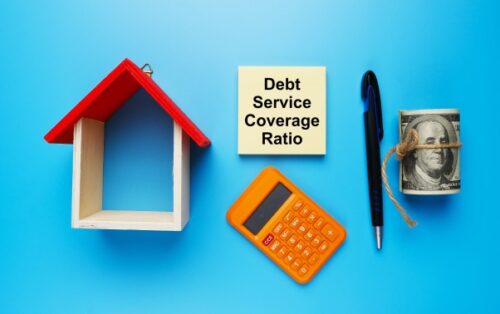If you’re looking to buy any property, you’re likely looking at getting a loan; this is how most people finance such a large purchase, as few people have hundreds of thousands of dollars lying around.
However, there are significant differences between buying a property for profit and buying one as your personal residence. This includes what kinds of loans you should pursue when looking at the perfect building.
Confused about what type of loan is used for what? Today, we’ll illuminate these two types of loans so that you better understand what to look for when financing your property.

Summary Table
DSCR Loans
- Used for commercial real estate
- Approved based on the property’s income potential
- Relies on a debt service income ratio
Conventional Loans
- Typically used for personal real estate
- Approved based on an individual’s credit history
- Relies on a combination of personal and property factors
The modern mortgage is actually a relatively recent innovation, which got its roots in Europe during the late 19th century. It began as a mortgage-backed security, where financial institutions would lend money with the understanding that should the homeowner fail to pay back their loan, the institution could take their home. The government only got involved after the widespread bank failures of the Great Depression, when the conventional loan took root with the help of the recently developed Federal Housing Administration.
For the most part, the government has only lightly regulated commercial real estate loans, which has led to great innovation in the options available to borrowers. However, with great reward comes great risk, which is why commercial loans, including DSCR loans, have historically had higher interest rates: they aren’t secured by the government as conventional loans are.
What is a DSCR Loan?
A Debt Service Coverage Ratio (DSCR) loan is a specialized mortgage product only used for commercial real estate. Companies, whether they are sole proprietors, franchises, or corporations, can access financing for property acquisition through private lenders, which may operate in multiple states or be very locally focused.
For example, someone looking for a DSCR loan in New York might work with VisioLending, which operates in 38 states across America; thus with, a larger coverage area enables investors and developers to buy across state lines and expand their real estate portfolios very quickly.
The most important part of a DSCR loan is the Debt Service Coverage Ratio, which compares the property’s potential income to its debts, such as the mortgage and insurance.
There is very little investigation into the borrower’s personal finances; usually, all that is required is their credit score.
These loans are not secured by the government, which means a bit more risk is involved. As such, lenders who provide DSCR loans typically charge higher interest than they would for secured loans.
What is a Conventional Loan?
A conventional loan is typically used for buying a private primary residence; this is the kind of mortgage you will use to buy your own home. As it will not generate income like commercial real estate does, the focus is mostly on your finances, including your credit score, debts, and income. You can expect to provide extensive documentation like tax returns, pay stubs, and lists of everything you owe on other loans. This will all be combined together to determine whether you are a good borrower who is not likely to renege on your debt.
While not guaranteed by the government, these loans are secured by Fannie Mae or Freddie Mac, so they are less risky and have lower interest.
How Are They Related?
Both a DSCR loan and a conventional loan are used to purchase property, and they will be issued by a private lender, bank, or credit union.
Institutions that issue these loans will charge interest and ask for your credit score.
The property you want to buy has to be appraised to identify whether it is worth as much as the purchase price. You’ll also need to provide a down payment and closing costs to purchase the property with either type of mortgage.
What Are the Differences?
DSCR loans are only for commercial real estate, while conventional loans can be used for either commercial or personal real estate.
A DSCR loan relies on the Debt Service Coverage Ratio, which is the property’s income potential divided by its debts; conventional loans rely on your personal financial history to identify whether you are a trustworthy borrower.
While both types of mortgage depend on an appraisal, a DSCR loan requires you to submit information about the property’s rental history or, if it has not been rented before, provide a rental schedule that assesses the fair market rent. This is used to identify whether it can cover its debts and how much profit it can reasonably produce throughout the year. Because conventional loans are typically used for personal properties that don’t make a profit, you won’t need to show anything about rental income.
Because the DSCR loan is mostly interested in how much income the property makes, there’s very little investigation into the borrower’s personal finances; all that matters is whether you can reasonably expect to make a profit while paying off the mortgage. With a conventional mortgage, the lender wants to see that you make enough income to pay for the mortgage, so they need more information about your finances.





